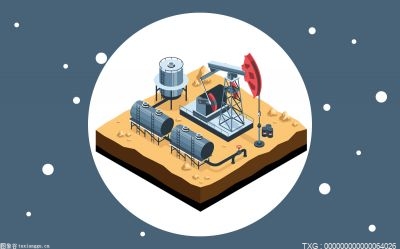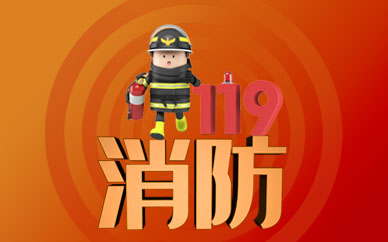孙权与鄂州的不解之缘
A Close Bond between Sun Quan and Ezhou
 (资料图片仅供参考)
(资料图片仅供参考)
楚天都市报极目新闻记者 赵德龙
实习生 陈潇彤 范甜甜
翻译: 黄晓雯 方健琦 樊坤铭(湖北大学)
Jimu News Reporter: Zhao Delong
Interns: Chen Xiaotong, Fan Tiantian
Translators: Huang Xiaowen, Fang Jianqi, Fan Kunming(Hubei University)
湖北省鄂州市滨江公园,一座总高11.8米的孙权像背靠长江,一手执剑,一手指向前方,向世人昭示着他与鄂州的不解之缘。
The city of Ezhou, located in Hubei Province, is home to a magnificent statue of Sun Quan. Standing at an impressive height of 11.8 meters, the statue depicts Sun Quan with his back facing the mighty Yangtze River. In one hand, he holds a sword while the other points forward, symbolizing his unbreakable connection with Ezhou. This stunning monument serves as a testament to Sun Quan"s legacy and his deep ties to the city.
历史上吴王孙权定都鄂州,取名武昌,寓意“以武而昌”,故鄂州又称“吴王古都”,而鄂州与武昌相关的,还有武昌楼、武昌山、武昌鱼、武昌观,乃至今天还有道路以武昌命名。
Throughout history, Sun Quan - also known as the King of Wu - played a significant role in shaping Ezhou"s cultural significance. Sun Quan designated Ezhou as the capital city and aptly named it Wuchang, which denotes “prosperity through military strength”. As such, Ezhou is often referred to as “the ancient capital of the King of Wu”. The city"s rich history is evident in its landmarks, including Wuchang Tower, Wuchang Mountain, Wuchang Fish, and Wuchang Temple. Even today, roads in the region bear the name Wuchang, serving as a nod to the town"s enduring legacy.
孙权定都鄂州后,给当地社会经济带来迅猛发展,也留下丰富的历史遗迹,吸引后世文人墨客前来赋诗打卡。近日,极目新闻记者探访鄂州西山、吴王城、武昌山等多处遗址,追寻三国时期孙权在鄂州的峥嵘岁月。
Following Sun Quan"s decision to settle in Ezhou, the town witnessed significant development, resulting in a thriving society and economy. In addition to its economic prosperity, Ezhou boasts a plethora of historical landmarks and scenic spots that have attracted writers and scholars throughout history to pen poems there. Recently, a reporter visited several prominent sites in Ezhou, including Xishan Mountain, Wuwang City, and Wuchang Mountain, with the goal of tracing Sun Quan"s impactful presence during the Three Kingdoms period. These sites serve as fascinating glimpses into the past and offer visitors a unique opportunity to connect with the history of this culturally significant region.
孙权大帝给鄂州改了名字
Emperor Sun Quan renamed Ezhou
鄂州旧称吴都、古武昌。吴王城遗址便位于鄂州市武昌大道南面、江家东巷西侧。据碑文介绍:吴王城平面呈长方形,东西长1100米,南北宽500米。
Ezhou, which was previously known as Wudu and is the former Wuchang, has a significant historical past. The ruins of Wuwang City, located south of Wuchang Avenue and west of Jiangjiadong Lane in Ezhou City, serve as evidence of this rich history. According to its inscriptions, Wuwang City boasts a rectangular plan that measures 1,100 metres in length from east to west and 500 metres in width from north to south.
湖北省考古研究院研究员、湖北理工学院特聘教授陈树祥介绍,吴王城是帝都,占地800亩,考古发现吴王城的城墙、护城河很明显,吴王城东、西、南三面城墙用夯土筑成,现南城垣的中段尚有部分保存在地面上,垣基宽达22米,高出城垣外地面4米至6米不等,在城的西、南城垣外侧,发现了城壕遗迹。
Chen Shuxiang, a researcher at Hubei Archaeological Research Institute and a distinguished professor at Hubei Polytechnic University, has introduced Wuwang City as the imperial capital that covered an area of 800 mu. Archaeological findings reveal that the walls and moats of Wuwang City were clearly visible. The eastern, western, and southern walls were constructed with rammed earth. The central section of the southern wall is still partially preserved on the ground, with the base of the wall measuring 22 meters wide and ranging from 4 to 6 meters above the ground outside the wall. The remnants of trenches were discovered on the exterior of the western and southern walls of the city.
黯淡了刀光剑影,远去了鼓角铮鸣。
The brilliance of blades and the resounding of trumpets have faded into the distance.
历史的硝烟散去,昔日的吴王城,现如今已成了居民小区。遗址碑文旁有凉亭和广场,大妈们在凉亭中打扑克,大爷们在广场上谈天下棋。
As the smoke of history has dissipated, the former Wuwang City has transformed into a residential community. Adjacent to the inscriptions of the site is a pavilion and a square where middle-aged women play ping pong, while the men gather to play chess in the square.
问起三国演绎的故事,大爷来了兴致,声如洪钟讲道,“《三国演义》天天看,我们现在住的地方,当年就是吴王城……”棋盘上,楚河汉界两端,已然摆开阵势……
When asked about the Three Kingdoms" legendary tales, an elderly man could not conceal his enthusiasm, his voice rung out out like a flood of bells as he spoke. “I watch The Romance of the Three Kingdoms every day. We are currently living in the city that used to be the King of Wu"s stronghold back then...” as the chessboard was set up and they began to battle under the chess game of Chu River and Han Border.
公元221年4月,孙权自公安迁都鄂县,取“以武而昌”之意,将鄂县改名武昌。次年,孙权在此地称吴王,沿用汉代鄂县旧城址修筑武昌城。
During April of the year 221 AD, Sun Quan relocated his capital from Gongan to E County, giving it a new name, Wuchang, which signified “prosperity through military strength”. The subsequent year saw Sun Quan assume the title of King of Wu and construct Wuchang City upon the foundation of the older E County dating back to the Han Dynasty.
“赖我大皇,发声明;虎臣雄烈,周与程;破曹乌林,显彰功名。”这是三国时期东吴军队高唱的军歌《伐乌林》,唱的是赤壁之战。
“With my regal decree as the foundation stone,
And loyal subjects standing firmly by my throne,
Zhou and Cheng, noble warriors of renown,
With their valor, added brilliance to our crown,
At Wulin, where our triumph was famously known,
Our victory shone bright, like a sun fully blown,
Crushing Cao"s army"s hopes and dreams, in one swift quest,
Our glory etched in history, forever to attest.”
This is a historical military anthem that was sung by the army of the Eastern Wu during the Three Kingdoms period, titled “The Felling of the Wulin.” It commemorates the famous Battle of Chibi and is a testament to the bravery and valor displayed by the soldiers on the battlefield.
公元208年,曹操率大军到东吴,以孙权、周瑜为首的东吴集团,联合刘备,运用诈降、火攻等多种战术,打败曹操大军,创造了中国军事史上以弱胜强的著名战例。
In the year 208 A.D., Cao Cao marched his army towards Eastern Wu. Eastern Wu, under the leadership of Sun Quan and Zhou Yu, allied with Liu Bei to combine various tactics, including false surrender and fire attack, to achieve a remarkable victory over Cao Cao"s army. This historic battle serves as a prime example in Chinese military history of defeating a stronger opponent with calculated strategy and resourcefulness.
赤壁之战后,孙、刘联姻,孙权借荆州给刘备。刘备夺取益州后实力大增,成为孙吴生存与发展的威胁。孙、刘集团从各自的战略出发,围绕荆州的归属,双方矛盾急剧上升。
After the Battle of Chibi, Sun Quan and Liu Bei formed a strategic alliance and Sun Quan graciously lent Jingzhou to Liu Bei. However, when Liu Bei later seized Yizhou, his power and influence grew substantially, becoming a significant threat to the survival and development of Sun Quan"s Eastern Wu. As a result, tensions between the two factions began to escalate, particularly in regards to the ownership of Jingzhou, leading to further conflicts and disputes.
此后,东吴吕蒙袭杀关羽夺回荆州,刘备举大军伐吴,正是在此背景下,孙权“自公安都鄂”,并将鄂州改名武昌。
After that, Lv Meng of Eastern Wu led an attack against Guan Yu and was successful in reclaiming Jingzhou. It was during this time that Sun Quan made the decision to rename Ezhou as Wuchang, in recognition of the city"s strategic and symbolic importance.
西山每寸土地都有名人脚印
Xishan Mountain Bears the Footprints of Renowned Figures
孙权为武昌做的第二件事,便是吸引后世文人墨客到访鄂州。吴王古都西边有一座山,名叫西山,古称樊山。西山位于长江中游南岸,北临长江,与黄州赤壁相望。
After renaming Ezhou Wuchang, Sun Quan made it his mission to attract literary figures to the city. To achieve this, he drew attention to Xishan Mountain, a mountain located to the west of the ancient capital of Wuwang, and formerly known as Fanshan. Situated on the south bank of the middle reaches of the Yangtze River, Xishan Mountain is flanked by the river to the north and offers stunning vistas of Huangzhou and Chibi.
“西山是国家4A级风景区,就在市区,很方便。成年人来回一趟,要一个小时。我一星期最少来三趟。”鄂州市民陈先生说。
“Xishan Mountain is a nationally recognized 4A-level scenic area that boasts a prime location within the city. With a round trip time of only one hour for an adult, it"s really accessible. I come here at least three times a week”, said Mr. Chen, a longtime resident of Ezhou City.
在陈先生看来,西山算鄂州的灵魂所在,孙权在武昌定都后,在西山留下多处遗迹,后唐朝的元结、李白,宋朝的秦观、苏轼、黄庭坚等人都到此游览赋诗,写下了不少千古绝唱,几乎每寸土地都覆盖了名人脚印。
According to Mr. Chen, Xishan Mountain is the heart and soul of Ezhou. Upon settling in Wuchang, Sun Quan left behind an abundance of relics within the area. Numerous renowned figures have visited the site throughout history, including Yuan Jie and Li Bai of the Tang Dynasty, and Qin Guan, Su Shi, and Huang Tingjian of the Song Dynasty. These poets wrote numerous famous pieces while visiting the site, seemingly imprinting their footsteps on every inch of the land.
西山不算高,山道两旁是绿树,即便在炎炎夏日,也会有清凉之感。山腰有一座凉亭,名叫黄武亭。据介绍:公元222年,孙权在“夷陵之战”大胜后,在武昌称王,自定年号“黄武元年”,大赦天下。建立此亭,彰显吴王威风,雄视宇内。
Xishan Mountain may not be tall, but its winding green paths offer a refreshing and cool respite from the summer heat. Alongside the trails sits a gazebo known as Huang Wu pavilion. Legend has it that in 222 AD, following Sun Quan"s success in the Battle of Yiling, he declared himself Emperor of Wuchang and designated his reign as the “Huangwu” era, granting amnesty to offenders. The pavilion was constructed to showcase the grandeur of Emperor Wu and the magnificence of Wuchang.
“西湖每滴水都是文化,西山每寸土都是历史。”鄂州市文化名人卢本涛说,三国时期,孙权、刘备、周瑜等都上过此山,彼时的西山,像历史大舞台,各路豪杰在此交相辉映。
Lu Bentao, a prominent cultural figure in Ezhou City, once said that every drop of water in West Lake represents its culture, and every inch of the West Mountain is steeped in history. During the Three Kingdoms period, Sun Quan, Liu Bei, and Zhou Yu all ascended the mountain which was likened to historical a stage where the greatest heroes and heroines of the time met and interacted.
山顶武昌楼是三国时期东吴军事瞭望塔,后人叫它武昌楼。登楼远眺,万里长江滚滚东流,鄂州黄州尽收眼底。
At the mountain"s summit stands Wuchang Tower, once utilized as a military watchtower by Eastern Wu during the Three Kingdoms period. Over time, it became known by this name. Climbing to the top of the tower rewards visitors with panoramic views of the rolling Yangtze River and the cityscape of Ezhou, with Huangzhou visible in the distance.
如今的武昌楼,是1998年为重现吴王避暑宫原貌而迁建的吴王避暑宫建筑群中的一座标志性建筑,楼门横额上飘逸的“武昌楼”三个大字,是郭沫若的手迹。
Today, Wuchang Tower stands as a celebrated landmark within the Wuwang Summer Palace complex. In 1998, the palace was relocated to restore its original splendor, and the building itself features the famous calligraphy of Guo Moruo, with the three imposing characters of “Wu Chang Lou” inscribed across the entrance"s pediment.
“昔日吴王避暑宫,三分割据各称雄。黄冈对峙沉云黑,赤壁鏖兵两岸红。半岭石岩曾试剑,中流砥柱有蟠龙。”晚清名臣官文写下这首诗,不仅再现了当年的历史,更让孙权的雄才大略跃然纸上。
“In the days of old, the King of Wu sought refuge in his summer palace,
As three powers waged war and claimed control over the Jiangnan region.
Tensions ran high in Huanggang, the air thick with an oppressive sense,
And heavy clouds that hung low, suffocating the populace.
At Chibi, the fierce battle raged with unchecked fury,
Till the waters of the river below turned crimson with blood.
On a mountain midway, a tale of swordplay unfolded with grace,
While in the river"s heart lay a pillar with dragon scales coiled in embrace.”
The poem, written by the renowned late Qing minister Guan Wen, not only vividly depicts the historical events of that era but also masterfully captures Sun Quan"s ambitious spirit on paper.
孙权造就武昌“铜镜之乡”美誉
Sun Quan credited for establishing Wuchang as renowned “birthplace of bronze mirrors”
在鄂州还有一座山,原名虎山,公元221年孙权从公安挥师到鄂县驻军虎山,遂改虎山为武昌山。
In Ezhou, there is another notable mountain that was initially named Hushan Mountain. However, in 221 AD, when Sun Quan relocated from Gongan County to E County and established his base at Hushan Mountain, it was renamed Wuchang Mountain.
关于山名的来历,还有个传说。据传当年吴王孙权从公安率部迁途鄂县时,途经虎山(现武昌山)脚下,将士们长途跋涉,疲倦劳累,加之天气十分炎热,个个饥渴难耐。吴王下令休息,寻找水源。忽见一只金鸡从林中窜出,继而重入密林深处鸣啼。吴王闻声寻去,只见金鸡站立处,清泉从洞口流出。吴王大喜道“苍天有灵,神鸡佑我也”,朝金鸡跪拜后畅饮之。孙权和将士们饮用泉水后恢复了元气,忙命将士们上山安营扎寨,修建亭台楼阁,从此屯兵养马,操练三军,并用“以武而昌”之意命名了武昌山、武昌门、武昌县……
There is a legend surrounding the origin of the mountain"s name. It is said, when Sun Quan, the King of Wu, led his troops from Gongan to E County, they passed by the foot of Hushan Mountain, which is now known as Wuchang Mountain. The long journey and intense heat left the soldiers exhausted, hungry, and thirsty. Sun ordered them to rest and search for water, and it was then that a golden rooster suddenly darted out of the forest, crowing before disappearing again. Upon hearing this sound, Sun went to investigate and discovered the golden rooster standing there, with a clear spring flowing from a cave nearby. Overjoyed, he exclaimed, “There is a divine spirit in the heavens, and the golden rooster has blessed us!” After bowing to the golden rooster, Sun and his soldiers drank from the spring and regained their vitality. Sun Quan then instructed his soldiers to camp and build pavilions on the mountain, where he planned to station troops, raise horses, and train the three armies. He then renamed the locations Wuchang Mountain, Wuchang Gate, and Wuchang County, which carry the connotation “prosperity through military strength”.
武昌山上有吴王寨,传说清代曾有五个绿林高手在山上立寨,故又名“五王寨”,山下居民也习惯称武昌山为“五王山”。武昌山上还有一座道观名为武昌观,乃近代重修,原名白衣庵。
Located on Wuchang Mountain is a village known as Wuwang Village, which is also referred to as “Five Kings Village” due to the five martial arts experts who founded it during the Qing Dynasty. The villagers living at the foot of the mountain also commonly refer to Wuchang Mountain as “Five Kings Mountain.” Additionally, there is a Taoist temple on the mountain called Wuchang Temple, previously known as Bai Yi An before undergoing renovations in modern times.
据《鄂州文化简史》一书介绍,东汉末年,鄂县户口不足万户,市野萧条。孙权迁都武昌后,下令从建业(今南京)“移民千家”来武昌。
According to the book A Brief Introduction of Ezhou City Culture, during the late Eastern Han Dynasty, E County had a population of less than 10,000 households and a slow market. When Sun Quan relocated his capital to Wuchang, he ordered over a thousand residents from Jianye (now Nanjing) to migrate to Wuchang.
建业移民大多是王亲贵族、富豪之家,也有大量能工巧匠,他们将南方的工匠技术、特别是青铜铸造工艺带到了武昌。这一举措既增加了武昌的人口,又输入了长江下游先进的生产力和文化,使得武昌的经济社会迅猛发展。
The majority of immigrants from Jianye were royal relatives, nobles, and wealthy individuals, as well as a significant number of skilled craftsmen who brought with them the southern craft of bronze casting techniques to Wuchang. As a result of this migration, Wuchang not only saw an increase in its population, but it also imported advanced productivity and culture from the lower reaches of the Yangtze River, thus contributing to the rapid development of its economy and society.
三国时期鄂州称武昌,与洛阳、会稽、徐州并称为全国四大产铜、铸镜中心。鄂州有2500余年铸镜史,出土的铜镜居全国之首,据不完全统计,迄今为止鄂州已出土了六七百面古铜镜。其中,以汉三国六朝时期铜镜数量最多,也成就了鄂州“古铜镜之乡”的美誉。
During the Three Kingdoms period, Ezhou city was known as Wuchang and was considered one of the four major centers for copper production and mirror casting in the country, alongside Luoyang, Kuaiji, and Xuzhou. Ezhou has a history of casting mirrors dating back over 2500 years, and it has unearthed the largest quantity of bronze mirrors in the country. To date, six to seven hundred ancient bronze mirrors have been excavated in Ezhou, with the majority found to have originated from the Han Dynasty, Three Kingdoms, and Six Dynasties periods. As a result, Ezhou has gained the reputation of being the “hometown of ancient bronze mirrors.”
一千多年以后,当年的武昌城几度更名,有了如今的美名鄂州市,“武昌”则成为武汉的市辖区。鄂州与武汉地相邻、水相依、人相亲、路相通、产相融,随着今年跨行政区域的《武汉新城规划》正式发布,以武鄂黄黄为核心的武汉都市圈纵深推进,以及花湖机场加快释放货运枢纽功能,两地双城故事将迎来新篇章。
Over a thousand years later, the former Wuchang city underwent several name changes before finally being bestowed with the beautiful name of Ezhou city, while the name “Wuchang” now refers to present-day Wuchang district, a municipal district of Wuhan city. In reality, Ezhou city and Wuhan city are adjacent to each other and connected through waterways, people, roads, and commerce. This year, with the official release of the Wuhan City New Planning initiative spanning administrative regions, the Wuhan metropolitan area with Wu-E Huang Huang (including Wuhan, Ezhou, Huanggang, and Huangshi) as its core is being promoted. Additionally, the Huahu Airport is accelerating its efforts to serve as a vital freight hub. As such, the future holds the promise of a new chapter in the shared story of Ezhou city and Wuhan city.
(来源:极目新闻)
更多精彩资讯请在应用市场下载“极目新闻”客户端,未经授权请勿转载,欢迎提供新闻线索,一经采纳即付报酬。














































